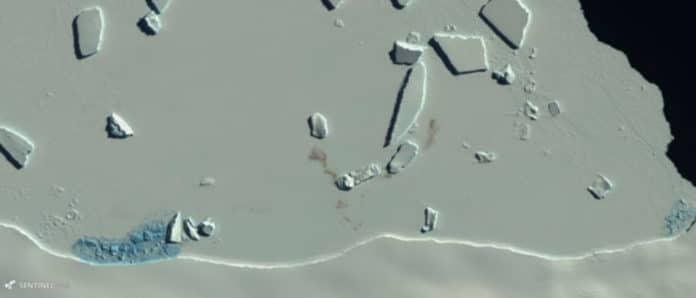Using satellite mapping technology, a new study unveils there are nearly 20% more emperor penguin colonies in Antarctica. The discovery acts as a significant benchmark for monitoring the impact of environmental change on the population of this iconic bird.
The study used images from the European Commission’s Copernicus Sentinel-2 satellite mission to locate the birds. Scientists detected 11 new colonies, three of which were previously identified but never confirmed. That takes the global census to 61 colonies around the continent.
Lead author Dr. Peter Fretwell, a geographer at BAS, says:
“This is an exciting discovery. The new satellite images of Antarctica‘s coastline have enabled us to find these new colonies. And while this is good news, the colonies are small and so only take the overall population count up by 5-10% to just over half a million penguins or around 265,500—278,500 breeding pairs.”
Emperor penguins need sea ice to breed and are located in areas that are very difficult to study because they are remote and often inaccessible with temperatures as low as -50°C (-58 degrees Fahrenheit). They are known to be vulnerable to loss of sea ice, their favored breeding habitat.
With current projections of climate change, this habitat is likely to decline. Most of the newly found colonies are situated at the margins of the emperors’ breeding range. Therefore, these locations are likely to be lost as the climate warms.
Dr. Phil Trathan, Head of Conservation Biology at BAS, has been studying penguins for the last three decades. He says:
“While it’s good news that we’ve found these new colonies, the breeding sites are all in locations where recent model projections suggest emperors will decline. Birds in these sites are, therefore, probably the ‘canaries in the coalmine’ – we need to watch these sites carefully as climate change will affect this region.”
The study found several colonies located far offshore, situated on sea ice that has formed around icebergs that had grounded in shallow water. These colonies, up to 180 km offshore, are a surprising new finding in the behavior of this increasingly well-known species.
Journal Reference:
Peter T. Fretwell et al. Discovery of new colonies by Sentinel2 reveals good and bad news for emperor penguins, Remote Sensing in Ecology and Conservation (2020). DOI: 10.1002/rse2.176
